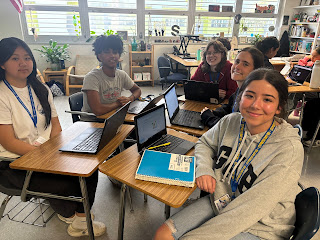My own production experience was very naive, with only a general idea of rudimentary shot composition and general editing standards at the beginning of this project. However, through working our way through the different stages of film production, I learned considerably more about cinematography, sound design, and post-production techniques. The most significant development was probably my ability to plan and produce visually interesting and tense shots. I learned how to create suspense with camera angles, using close-ups to emphasize emotions, low angles to intensify some scenes, and tracking shots to place the viewer in the protagonist's position. I also learned a great deal about lighting—I at first struggled with having the correct balance of being noticed and creating atmosphere in our own dark garage studio, but with experimenting with LED lighting, lighting for practical scenes, and color grading in post, I was able to achieve my spooky thriller aesthetic without compromising on visual clarity.
Besides cinematography, my editing knowledge also significantly improved. I realized how to time out scenes to be suspenseful by cutting from one shot to another at the appropriate time to build tension. I realized the power of sound design in framing the audience's experience—through the use of Foley effects, ambient sound, and silence at appropriate moments, a lot was contributed in making the escape scene more intense. I also grew more confident in applying advanced editing methods like layering of sound, color tone manipulation for mood, and quick cutting to create tension. My collaboration skills also improved. I learned how to clearly communicate my creative vision, work on shot planning together with others, and adjust to problems like reshooting some scenes because of lighting inconsistency or cleaning up our audio to prevent background noise interference. Overall, this project truly enhanced my ability to take an idea and develop it into a well-structured, interesting, and engaging film sequence, and I am much more secure in my filmmaking skills.
For question 3, the gentleman will ask me, "How did your production skills develop throughout this project?" I will respond by discussing how my skills evolved from start to finish. I will mention that my initial grasp was rudimentary and that it mainly consisted of shot formation and editing but the more I progressed, the more I learned about cinematography, sound mixing, and editorial approaches. I will explain how I came to master suspense in camera shot building and lighting, how I refined editing to establish tension, and how I built more confidence when using sound design to amplify experience. I'll provide examples within the movie itself, like before-and-after photography, to clarify how skills develop over time. I will be honest and straightforward, describing how each step assisted me in becoming a good filmmaker.
My own production skills were very basic, including merely elementary know-how of simple shot building and simple editing techniques, during the early stages of this project. But as we went along through the different stages of filmmaking, I learned much about cinematography, sound design, and post-production techniques. The most significant accomplishment was, maybe, my ability to create and develop visually pleasing and suspenseful shots. I learned to create suspense through camera angle, using close-ups to emphasize emotions, low angles to intensify certain scenes, and tracking shots to put the audience in the position of people like the protagonist. I also picked up a lot on lighting—I stumbled at first with attempting to capture the proper mix between viewing and establishing atmosphere within our dark, garage workshop setup, but with experimenting with LED lighting, lighting for practical shots, and color grading post, I was able to achieve my creepy thriller aesthetic without sacrificing visual definition.
My editorial abilities were also increased beyond measure aside from cinematography. I came to know how to cut alternately between the shots at the appropriate time so that tension was built in the scenes to be most tense. I also derived the power of sound design to mold the perception of the audience—through the use of Foley effects, background sound, and silence at the appropriate times, a lot of contribution was done to make the escape scene engaging. I also became more comfortable using sophisticated editing techniques such as layering sound, color tone manipulation for atmosphere, and rapid cutting to build tension. My collaboration skills also grew. I figured out how to clearly communicate my vision, collaborate on shot development, and facilitate problems like reshooting certain scenes when there were inconsistencies in lighting or improving our sound to avoid interference from extraneous background noise. Overall, this project truly enhanced my ability to take an idea and turn it into a structured, engaging, and compelling order for a film, and I feel much more capable in my career as a filmmaker now.
In response to question 3, the male interviewer will inquire, "How did your production skills develop through this project?" I will respond by explaining how my skills improved from start to finish. I will describe that my initial impression was general and that it was mainly regarding shot construction and editing but in the course of time, through the process, I learned much more about cinematography, sound mixing, and editing styles. I'll explain how I learned to become skilled at suspense building with camera angles and lighting, how I developed my editing skills to build tension, and how I became more confident in the use of sound design to enhance the experience. I'll have concrete examples from the film, like before-and-after photographs, to show how skills increased over time. I will be truthful and easy to understand, explaining how every step improved me as a filmmaker.
